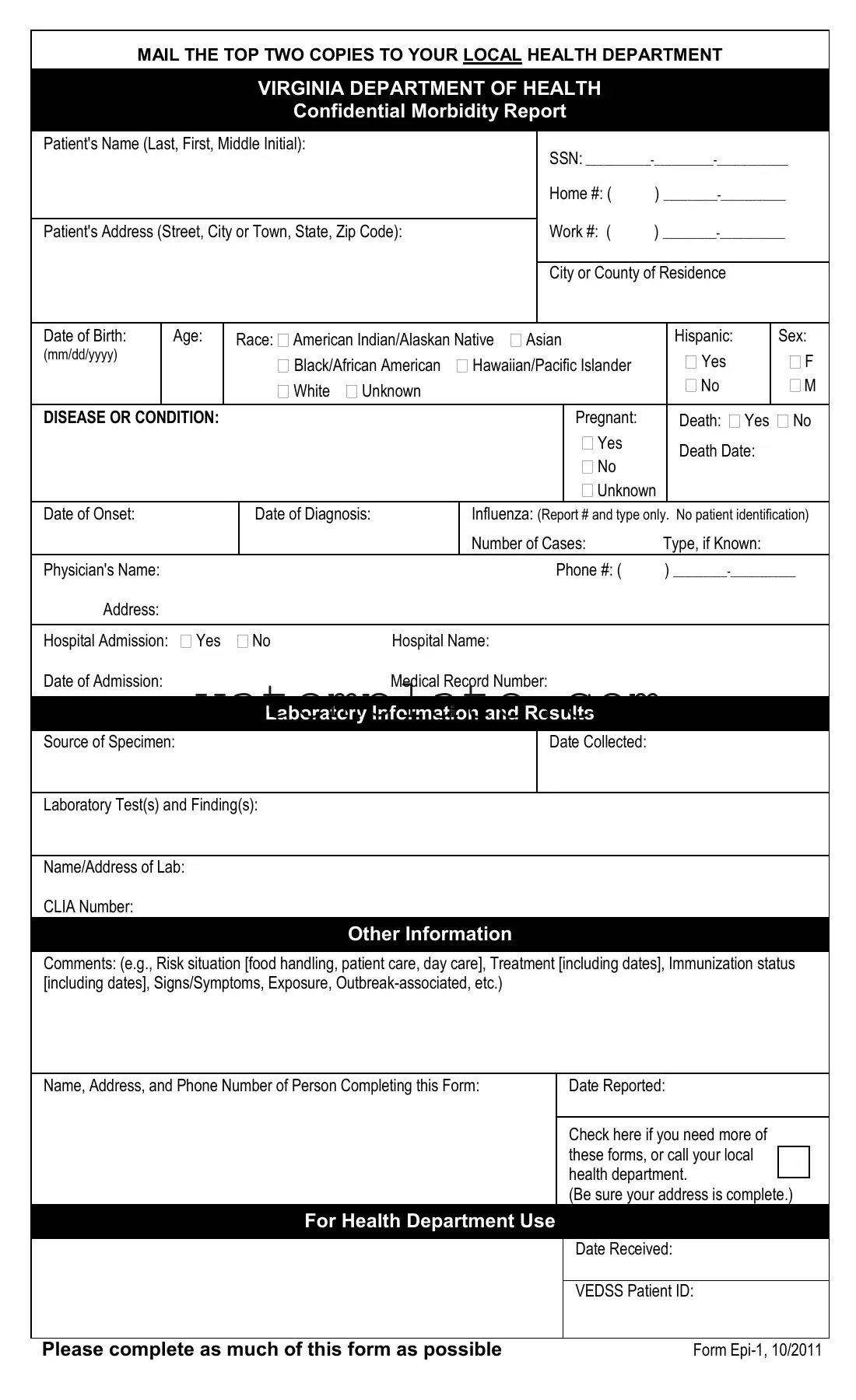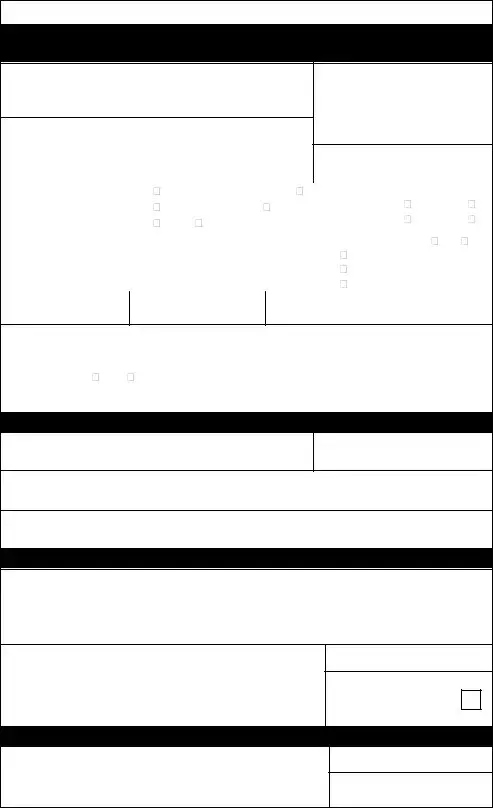The Virginia Epi 1 form is used by healthcare providers to report certain diseases, conditions, and outbreaks that are of public health importance to the Virginia Department of Health. Its main purpose is to ensure that the health department is informed about illnesses that might require public health intervention or monitoring. Reporting these conditions helps in tracking, preventing, and controlling the spread of diseases within the state.
This form must be completed by physicians, directors of medical care facilities, and laboratory directors. While all mentioned diseases and conditions must be reported, certain ones identified in all caps on the form require immediate notification by the fastest means possible. Others should be reported within three days of identification.
Many disease conditions are reportable, ranging from infectious diseases like influenza, Hepatitis A, B, and C, and Measles (Rubeola), to more severe conditions such as Anthrax, Ebola, and Rabies. The form lists both diseases that must be reported immediately and those that can be reported within a three-day window.
How are the diseases reported?
Reports can be made via computer-generated printouts, the Epi-1 form itself, CDC surveillance forms, or, upon agreement with the Virginia Department of Health (VDH), by secure electronic transmission. Immediate reportable diseases should be communicated through the fastest means available, including phone calls directly to the local health department.
What is the role of laboratories in reporting diseases?
Laboratories play a crucial role in disease reporting. They are required to notify the health department about positive cultures for the listed conditions and submit the initial isolate to the Virginia Division of Consolidated Laboratory Services (DCLS). For certain tests, like those identifying Shiga toxin-producing E. coli without concurrent culture tests, the laboratory must forward the positive specimen to DCLS for further confirmation and characterization.
Is there any confidentiality concern with reporting diseases?
Yes, the Virginia Epi 1 form is a confidential morbidity report. The information collected is used exclusively for public health purposes, such as tracking, controlling, and preventing disease. Patient privacy is protected under health information privacy laws, and the data is handled with strict confidentiality protocols to safeguard individual privacy.
The form requires detailed patient information, including name, social security number, contact information, and demographic details like age, race, and sex. It also asks for the disease or condition being reported, relevant dates such as onset and diagnosis, and any laboratory test results. Healthcare providers are encouraged to provide as much information as possible to aid in public health efforts.
The top two copies of the completed form must be mailed to the local health department of the patient's city or county of residence. The address for the local health department can typically be found on the Virginia Department of Health's website or by contacting the VDH directly.
Yes, if more forms are needed, you can check the request box on the Epi 1 form itself or call your local health department. They will provide you with additional forms so that you can continue to report any diseases or conditions as mandated.




 Campylobacteriosis * Chancroid * Chickenpox (Varicella) *
Campylobacteriosis * Chancroid * Chickenpox (Varicella) * 






 (IDENTIFICATION OF ORGANISM) AND DRUG SUSCEPTIBILITY
(IDENTIFICATION OF ORGANISM) AND DRUG SUSCEPTIBILITY PLAGUE *
PLAGUE * 
 PSITTACOSIS *
PSITTACOSIS *




 Tuberculosis infection in children <4 years of age
Tuberculosis infection in children <4 years of age UNUSUAL OCCURRENCE OF DISEASE OF
UNUSUAL OCCURRENCE OF DISEASE OF
 A laboratory identifying evidence of these conditions shall notify the health department of the positive culture and submit the initial isolate to the Virginia Division of Consolidated Laboratory Services (DCLS) or, for TB, to DCLS or other laboratory designated by the Board.
A laboratory identifying evidence of these conditions shall notify the health department of the positive culture and submit the initial isolate to the Virginia Division of Consolidated Laboratory Services (DCLS) or, for TB, to DCLS or other laboratory designated by the Board.